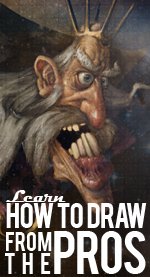Technical Drawing in a NutshellThe name technical drawing must give you a slight idea about its meaning, but let me define it exactly: the method of creating exact representations of objects for architecture and engineering drawings is called technical drawing. Its other famous name is drafting. A person who is a professional practitioner of this art is known as a draftsman or draftsperson. Well, with the development of technology, the technicalities of drafting task have also been automated and highly accelerated due to the use of CAD systems. I just want to scratch the surface of technical drawing here for you so that if it interests you, then you can hunt down further information. Even if you are not a skilled practitioner, you may want to know about the basic mechanics involved in technical drawing. So, here I can provide you with some information regarding this. Actually, the basic workings of drafting include placing a piece of paper or other material on a drafting table. Drafting tables are used, since they have a smooth surface with right angled corners and straight lines. Thereafter, a "t-square", which is a sliding straightedge, is positioned at one of the sides. While placing it, it is ensured that it is slid across the side of the table and so, over the surface of the paper. Now, you must be thinking what the use of the t-square is. This t-square is used to draw parallel lines. How? Simply run a pencil or technical pen along the edge of the t-square - can't get much easier than that! The use of a t-square does not end here, normally; it is used as a tool to hold other devices like triangles or set squares. So, one or more triangles of known angles can be placed on the t-square. Since the t-square is at a right angle to the corner of the table, it is easy for a draftsman to draw lines at any selected angle to others on the page. Though this may sound a little confusing, don't be, the ability to easily draw straight lines is extremely important when you are doing technical drawing. Most of these methods are passé now. These days, you will find most modern drafting tables equipped with a parallel rule. This rule is supported on both sides of the table so that a large paper sheet can be slid over it. Using this, you are no longer required to be extra cautious while drawing parallel lines, as they will definitely be parallel. How can I be sure of this? Simple, both sides of the ruler are secured! Do not think that this is the only tool a draftsman uses. Different tools are used draw curves and circles. Remember your old grade school geometry kit? Those old plastic shapes are some of the same tools that professionals use then they are doing their own technical drawings. Important among these include the compass that is used to draw simple arcs and circles and the French curve, which is generally a piece of plastic having complex curves on it and a spine that can be used manually to draw most curves. If you are thinking that technical drawing only needs a few fancy lines drawn on a piece of paper, think again! For drafting, one also needs exact understanding of geometry and the professional skills. If you think, you already have all these or you are ready to learn this, I urge you to pursue your technical drawing as it can lead to a great career. Don't Miss This - Learn to Draw from Professional ArtistsAre you looking to make a breakthrough with your artistic abilities? Artists from the world's top studios like Disney, Nickelodeon, Blue Sky, and Pixar are sharing their hard-earned knowledge so you can learn directly from the people who create the amazing comics, movies and cartoons that we all watch and love. If you're tired of looking for a good teacher - stop looking right now and click this link. |
 |